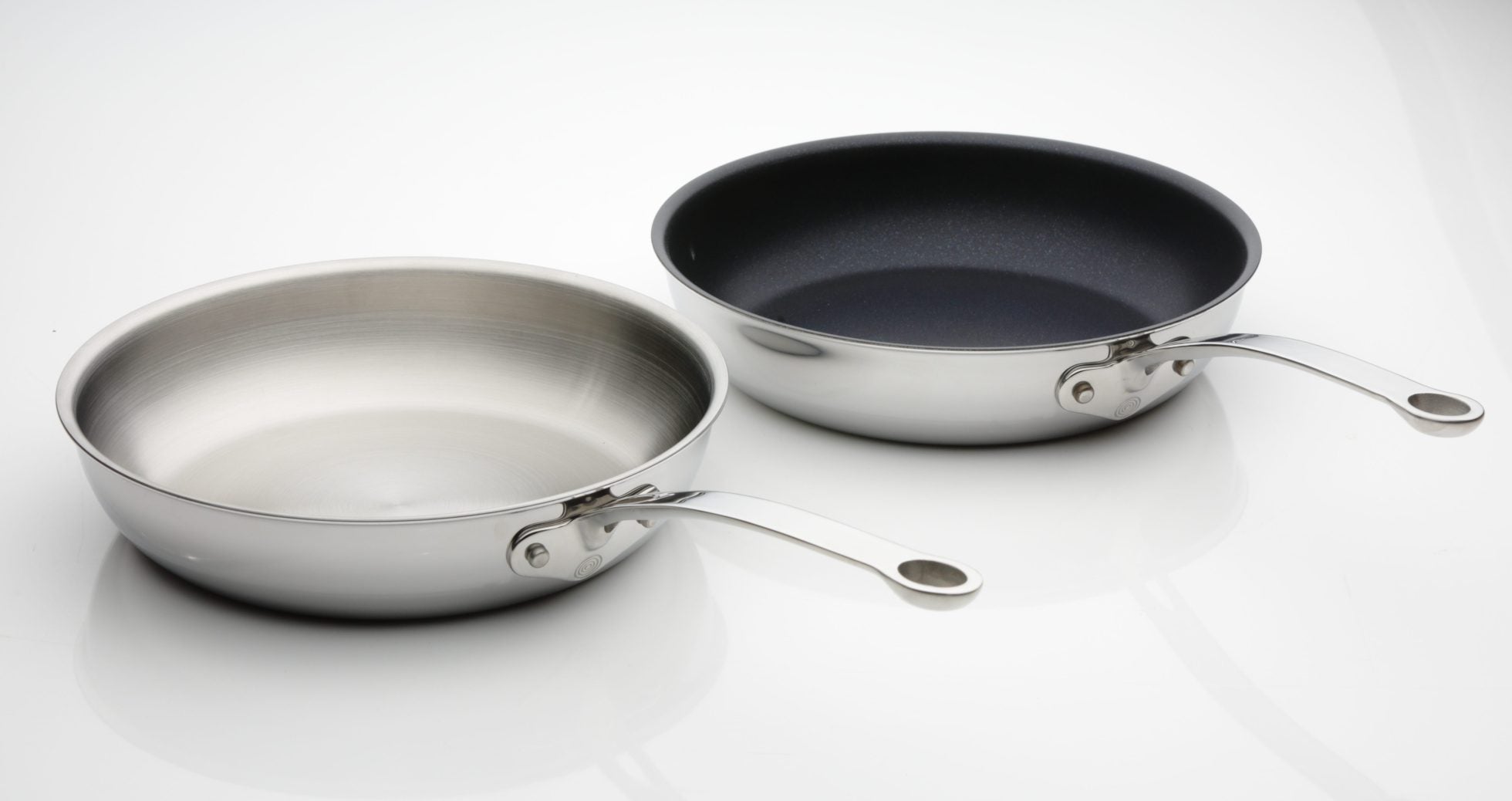Total £0.00

It has been over 60 years since non-stick cookware was first introduced, and since then its popularity has continued to be widespread and significant. You would likely be hard-pressed to find a household in the UK that doesn’t have at least one non-stick pan. The promise of pancakes gliding effortlessly on to your plate; the prospect of never again being stood at the kitchen sink chiselling burnt food off your favourite frying pan. The appeal was, and still is, obvious. There are some strong arguments, however, in favour of the more traditional stainless steel pans that beg the question – which is better, non-stick or not?

Whatever your feelings are toward non-stick pans, it is difficult to deny their virtues in the realm of frying eggs and making pancakes. The ease with which you can produce perfect fried eggs with nothing but a drop of oil and a delicate touch make them (in our view) worth having, if just for this task alone. Also, cleaning non-stick pans is often a breeze. If you get a decent one sometimes just a wipe with a paper towel does the trick.

Unfortunately, they do have their limitations. The main one, which every keen cook will race to share, is that when using a non-stick pan, you cannot achieve that lovely golden colour when searing meat or caramelising. For this purpose, stainless steel pans are invaluable. Another area in which stainless steel reigns supreme is the making of gravy and pan sauces, an essential part of some dishes. All the juices that are released during cooking stick to the pan, allowing you to deglaze with the desired liquid.

Aside from culinary matters, there are also some very practical reasons why stainless steel pans are favourable. Firstly, they are generally considered to be far more durable than their non-stick counterparts due to non-stick coatings often being easily damaged and requiring careful handling (find out more about looking after your non-stick here). To ensure the longevity of our pans we use Teflon Platinum Plus, a market leading, ceramic reinforced coating that we test rigorously (check out the video below). In addition, non-stick pans can’t be preheated in the way a stainless steel one can. This is due to good non-sticks being made up of multiple layers and when a pan is heated while empty the heat has nowhere to be transferred to which can lead to the layers deteriorating.
Many people are deterred from cooking with stainless steel because they think everything will immediately stick, burn and it will all end in a charred, greasy disaster. What they don’t know is that it will only take a bit of confidence, some practice and the right pan for it to become a walk in the park.
A great place to start is buying a quality pan. Pans that are very thin (some basic ones are as thin as 0.4mm), are likely to develop hot-spots and will not heat evenly. It is this which leads to food being burnt in one place and underdone in another. The Proware Stainless Steel Tri-Ply 26cm Frying Pan has a three-layer construction – two layers of stainless steel sandwiching a core of aluminium. The overall thickness of the pan is 3mm, resulting in a wonderful robust feel and an ability to heat very evenly. It also means, like the rest of the range, this pan is oven safe.
Once you have your pan, the easiest way to ensure effortless, stick free cooking is to season the pan (it is worth noting that this is not essential if you are willing to use oil a bit more liberally). Seasoning will produce a thin layer on the surface of the pan which will allow you to cook without the addition of more oil, and most importantly, without your food sticking. This is how you do it:
Seasoning Stainless Steel
- Ensure your pan is thoroughly clean and over a medium heat, allow the pan to heat up for 2-3 minutes.
- Add a tablespoon of oil (rapeseed works very well) and swirl around the pan to evenly coat the inside.
- Heat the oil until it begins to smoke. Once smoking, remove the pan from the heat and set aside to cool completely.
- Pour out the oil and wipe the inside of the pan with paper towel.
- Your pan is now seasoned and ready to use.
Another useful tip when it comes to cooking with stainless steel is take your time! Do not rush and resist the temptation to constantly move your food around the pan. For example, when cooking meat, if the pan is properly preheated and the oil is hot when the steak is added you need not move it again until it is time to turn it. The meat will seal beautifully and you will be able to lift it from the pan easily, if you try to move it too soon you run the risk of tearing the flesh.

The Verdict
A conclusion we can draw in the argument of stainless steel versus non-stick, is that they both have their merits and drawbacks but it really depends on what you intend to use it for. For the more ardent cooks amongst you, we would actually recommend having one of each. Use your non-stick for things like eggs, crepes and delicate fish; and the stainless steel for just about everything else.



Comment (0)